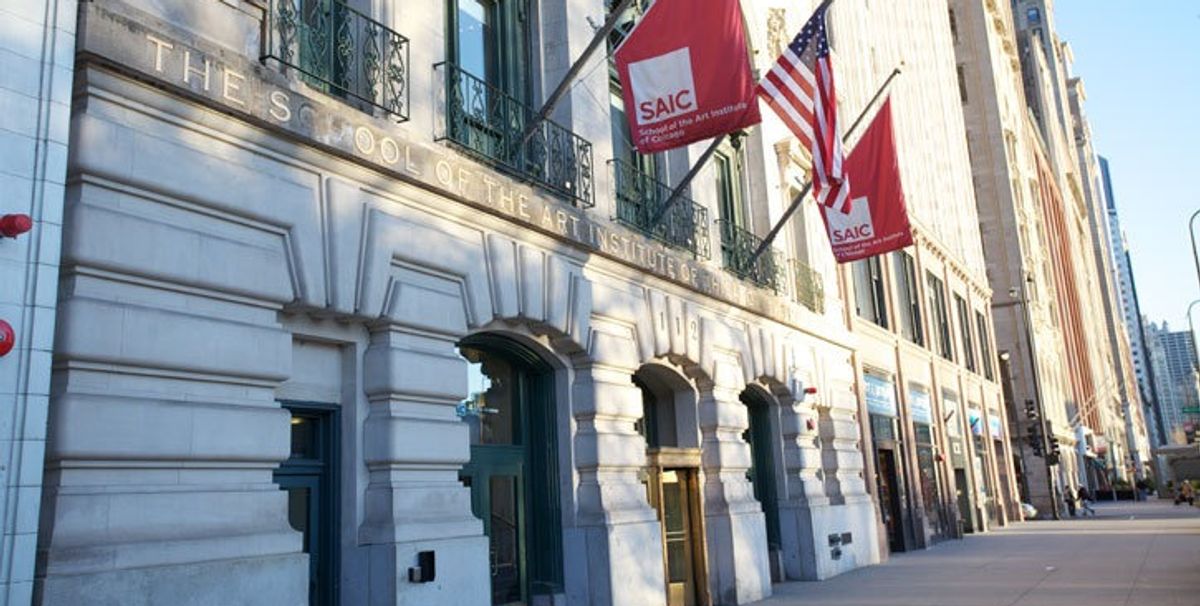A storm has been brewing at American universities in the past few years over what can be taught in the classroom. Critics have accused administrations of stifling faculty and overprotecting students by using a gender-discrimination law known as Title IX and by insisting on “trigger warnings” for potentially controversial material covered in the curriculum. The School of the Art Institute of Chicago (SAIC) is now at the centre of the storm, due to its treatment of Michael Bonesteel, an adjunct professor specialising in outsider art and comics who resigned this year after two Title IX complaints were filed by transgender students.
In his June resignation letter, Bonesteel told the dean that the atmosphere at the school “feels more like a police state than a place where academic freedom and the open exchange of ideas is valued.” And this month, the Chronicle of Higher Education published a deeply reported, blow-by-blow account of the situation, prompting a string of comments online blasting SAIC for its “weak-kneed administration coddling self-righteous students” and a culture of “political correctness run amok”.
Laura Kipnis, whose new book Unwanted Advances: Sexual Paranoia Comes to Campus exposes the recklessness and capriciousness of Title IX investigations, has also weighed in on Twitter, faulting the SAIC for “jawdropping cowardice”. “Censoring speech at an art school! Duchamp reels in grave,” she tweeted, adding a suggestion that SAIC donors “think twice abt their next check.” (The school is close to completing a $50m capital campaign to increase resources such as scholarships.)
According to the Chronicle story by Tom Bartlett, a transgender SAIC student named Jos Demme filed the first complaint against Bonesteel under Title IX, the law that prohibits sex discrimination in federally funded universities. In a class on outsider art held last autumn, Bonesteel, who edited a 2000 Rizzoli book on Henry Darger, presented a theory that the artist, known for painting an army of warrior-girls with penises as part of his epic Vivian Girls narrative, might have been sexually abused.
Demme remembers objecting: “I said I was a transgender student and hadn’t been molested. That day I felt, not directly targeted, but unsafe and unsupported in the classroom.” Demme later filed a title IX complaint. This time Bonesteel was cleared.
But by that time, tensions were growing in his history of comics class too. When students on a class break were talking about the possibility that the Joker raped Batgirl in the 1988 graphic novel Batman: The Killing Joke, another transgender student, identified by Bartlett only as “Gabe”, expressed discomfort about the conversation. The student either asked for a trigger warning or for the rape discussion to be toned down, depending on whose account you believe.
Later, when Bonesteel showed the class a Little Lulu comic strip featuring a bare-bottomed child, he asked the students if he should have issued a trigger warning first. On another occasion, Bonesteel mentioned his problems with the transgender student in the other class, saying, "It doesn’t mean that everyone who comes here is going to be completely transgender aware. So I’m just saying that, inevitably, there's going to be disappointments in this area.” Gabe filed the second Title IX complaint against Bonesteel based on these two incidents.
Bonesteel was found guilty this time on two counts, for his behaviour of “ridiculing the student when they requested trigger warnings” and “associating the student generally with a trans student in another class with whom you were having difficulties”.
The SAIC dean of faculty, Lisa Wainwright, wrote a letter to Bonesteel in March with these findings, informing him that he would no longer receive a multi-year contract and a one-year contract was dependent on the successful completion of his harassment and discrimination training course. He soon learned that he would no longer be allowed to teach his two history of comics courses, even though they were routinely over-enrolled, which meant that he would lose health insurance for lack of enough teaching hours. He also says he was asked to revise his outsider art syllabus in consultation with his department chair. He decided to resign.
Throughout, Bonesteel has maintained he was never shown written copies of his students’ complaints and compared the investigation to a “Kafkaesque” trial in which he was guilty until proven innocent.
That is a central criticism of Kipnis’s recent book. Reached by phone this week, the author said that lack of transparency is par for the course and most professors won’t even speak publicly about their investigations for fear of facing additional Title IX charges for “retaliation”.
“What’s shocking for me is that this is happening at an art school,” said Kipnis, a Northwestern University professor who once taught a pornography course at the SAIC. “It’s a place where you’d think there would be flexibility of thought, openness of expression, freedom to pursue ideas that are challenging or contestatory,” she said.
“The idea that students are trying to censor or curb a professor’s opinions or thinking is appalling,” she added.
Reached by email, Wainwright responded that she cannot discuss “individual personnel matters and therefore cannot answer specific questions regarding Mr Bonesteel”.
But she did issue a general statement disputing allegations of SAIC “infringing on academic freedom. This simply is not the case, and frankly, would be anathema to our pedagogy. Individual expression is at the core of SAIC’s mission. We prize academic freedom and defend it fully.”
As for Bonesteel, he said he’s taking a break from the press but did provide a comment to The Art Newspaper by email, saying he was “very pleased” by the Chronicle of Higher Education article. “It serves as a cautionary tale for teachers in academia today and is the best argument for the necessity for adjuncts to form a teachers’ union so that someone will be in their corner if and when such a debacle should happen to them.”


